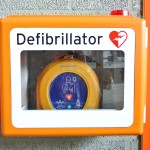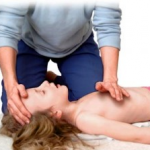Since it’s summertime, we thought we’d make sure to give you a refresher on water safety and how injury and fatalities can be prevented from vigilance and the correct administration of life-saving CPR. We’ve already addressed how to identify a drowning victim, so we’ll spend this blog talking about something called “secondary drowning.”
Although very uncommon, the condition called “secondary drowning” occurs after a water-related trauma has already happened. For example, if a young child falls into a pool, and is retrieved without much incident, “secondary drowning” can occur later on. Even if the child seems to have recovered just fine without CPR or any help with breathing, he or she may not be entirely out of danger.
“Secondary drowning” can occur when fluid builds up in the lungs after a water trauma. It is a pneumonia-like reaction that can cause asphyxiation if it is not treated.
According to Dr. Alexis Topjian, an attending physician in the pediatric ICU at the Children’s Hospital of Philadelphia, symptoms of “secondary drowning” include:
- Lethargy
- Coughing after the event is over
- The child is not acting like himself
- A change in the color of the lips
- A change in breathing
So, if your child has a close call, be sure to monitor them to make sure they aren’t suffering from any lasting effects of the incident. And, as always, stay up to date on your CPR skills and take CPR classes with SimpleCPR!





